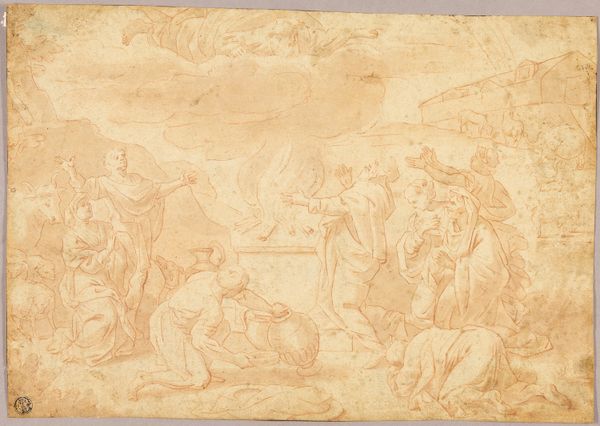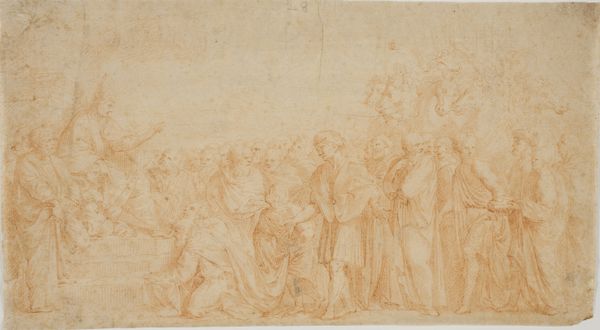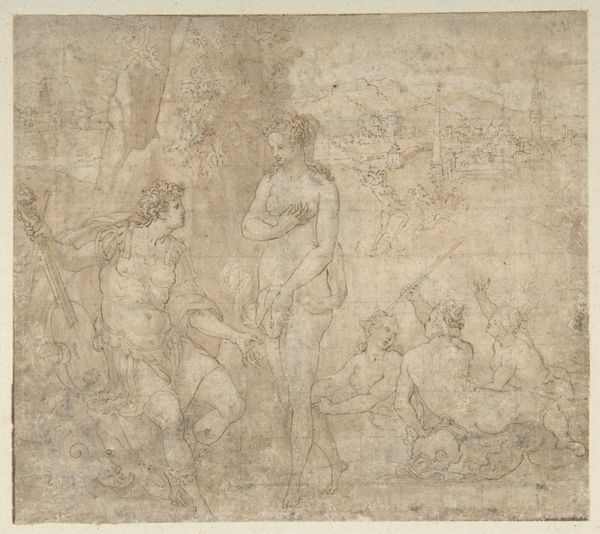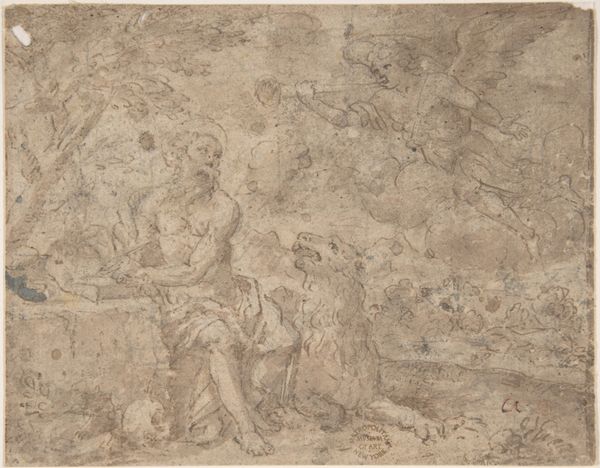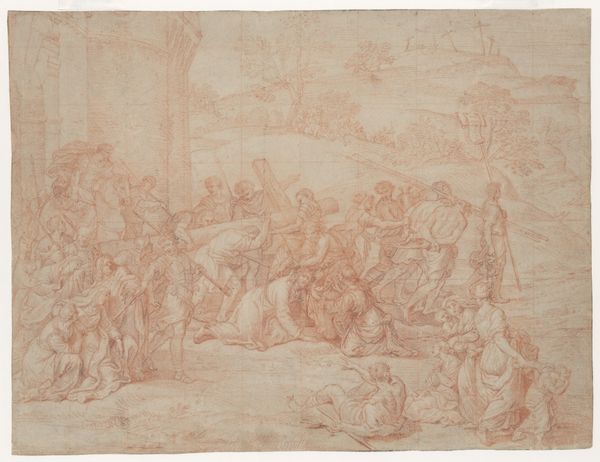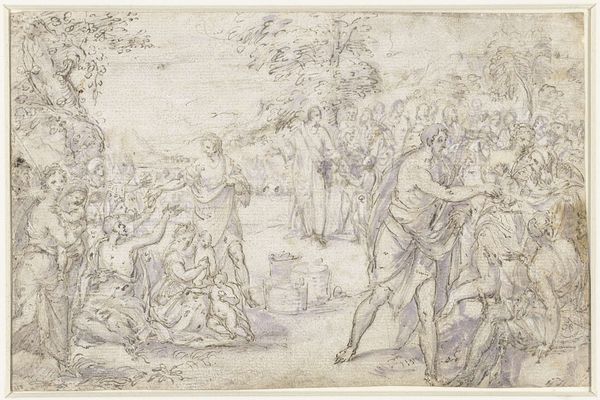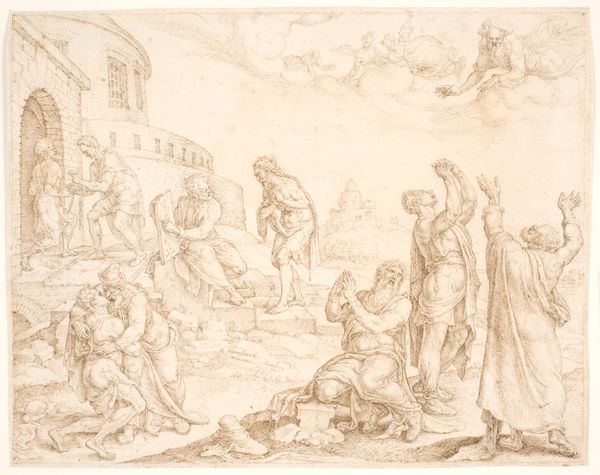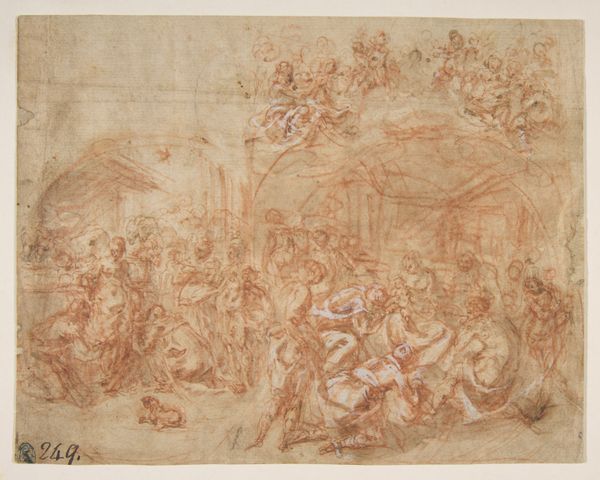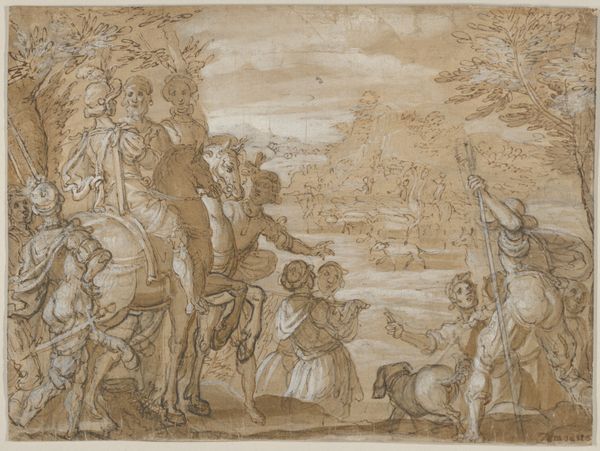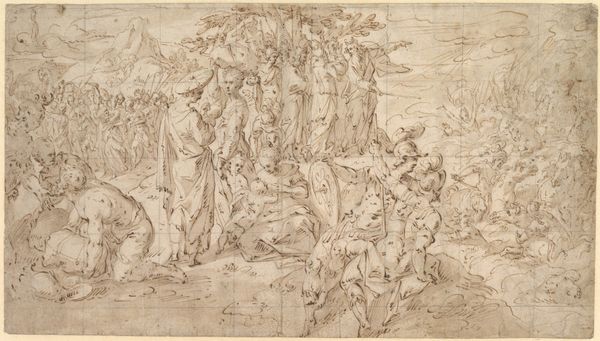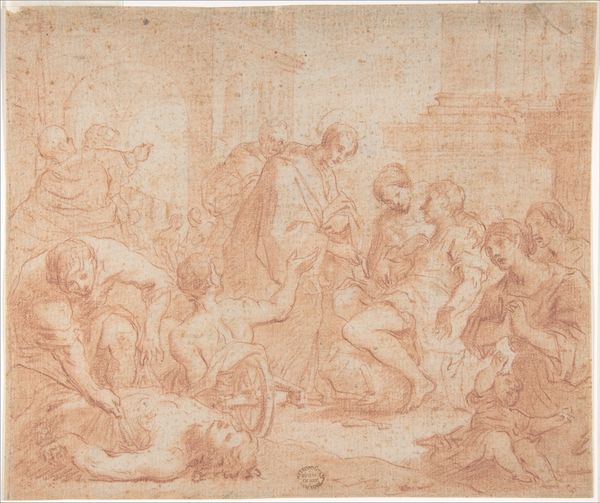
Romulus og Remus. (Livius I, 4). Studie efter Carlo Marattis maleri i Sanssouci, Potsdam (udf. 1692 for Niccolo Maria Pallavicini) 1671 - 1738
0:00
0:00
drawing, dry-media
#
drawing
#
narrative-art
#
figuration
#
11_renaissance
#
dry-media
#
history-painting
Dimensions: 425 mm (height) x 603 mm (width) (bladmaal)
Curator: Oh, isn't this evocative? Just bathed in that warm sanguine hue... Editor: It is, it is. What are we looking at exactly? Curator: This drawing is a study by Hendrik Krock, titled "Romulus og Remus. (Livius I, 4). Studie efter Carlo Marattis maleri i Sanssouci, Potsdam," and was created sometime between 1671 and 1738. He worked with dry media, in his depiction of a copy after the italian Maratti of the founding story of Rome. Editor: Right, the she-wolf and all. It is amazing how the Romulus and Remus myth continues to echo through visual culture isn't it? Think about the longevity of these foundation stories, shaping self-understanding for millennia. Curator: Absolutely. You know, what strikes me here is the deliberate ambiguity of gesture and emotion. The figures are rendered with such refinement, yet the actual weight of the narrative seems...softened? Like a dream. Editor: Yes, and consider the dog... or rather, wolf in the foreground. What does that symbolize to you? Curator: Well, instinctually, I see nurture and primal power, juxtaposed with this delicate exchange in the centre, the shepherd handing over the children… Editor: Exactly. The wild, untamed energy – the future Rome itself – being gently coaxed towards civilization. It's a potent contrast. And notice how Krock, or even Maratti as the original artist, is using landscape itself. A specific topography transformed into the very concept of the founding, where every river, every hill seems pregnant with symbolic possibility. Curator: Hmm. That almost-ethereal quality the warm color imparts contributes, it's hard to feel you are gazing directly at "History" - but at a reflection. The Renaissance was obsessed with mirroring the classical era, the same is apparent here. Editor: It’s about evoking history as an idea, as an aspiration. About placing their moment within a grand, cyclical narrative of rise and renewal, which, interestingly, are present today, more than ever. Curator: Krock has truly given us not just a story, but an echo of one, it stays and resounds in your memory even after one turns away... Editor: It indeed becomes, a mirror reflecting who we wish to see.
Comments
No comments
Be the first to comment and join the conversation on the ultimate creative platform.
